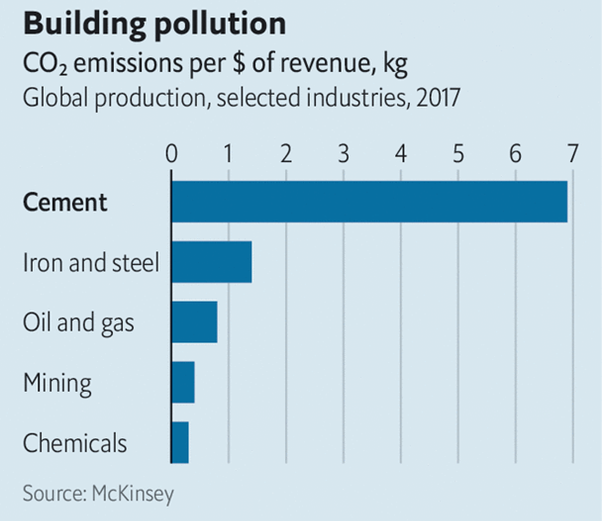It was said Graphene was to offer astonishing possibilities. Graphene can help decarbonise industry, produce greener concrete and make hydrogen. For a start, graphene is 200 times stronger than steel. Yet it is extremely lightweight and flexible. It is also an excellent conductor of heat and electricity.
But despite this promise, graphene remains largely unemployed – that could be about to change.
Concrete is an important material and of great concern to those attempting to slow down global warming, because the process of making it inevitably releases carbon dioxide – graphene may hold the key to reducing that contribution considerably.

The 5bn tonnes of cement produced each year thus account for some 8% of the world’s CO2, and generate abnormally high emissions per dollar of revenue earned compared even with other polluting industries.
If less than 0.1% by weight of graphene is added to the mixture, concrete ends up 30% stronger. And stronger concrete means less of it is needed, with a consequent reduction in CO2.
Graphite is not a renewable resource and it has to be mined, which can be environmentally damaging. As an alternative some producers obtain their feedstock elsewhere. This can be as organic compounds in gaseous form, such as methane, or as liquids like ethanol, an alcohol that can be made from plant matter.
Some 30bn tonnes of concrete are poured every year. The addition of a small amount of graphene to concrete provides an anchor for the cement in it to grab onto, resulting in a more powerful interaction as the concrete cures.
This means not only that less concrete is needed to achieve the same level of strength, but also that structures made of it are likely to last longer.
Graphene-enhancement would also protect rebar, the steel rods used to reinforce concrete, from moisture. If water creeps into tiny cracks in concrete it can cause rebar to rust and expand, which results in concrete crumbling and sometimes in buildings collapsing. In certain cases, indeed, the use of rebar in construction might be avoided altogether, saving costs and the emissions involved in producing the steel from which it is made.
Another hazard to concrete is chlorine, which is found in seawater and is particularly corrosive but trials have found the addition of just 0.005% of graphene to marine cement enhances its resistance to chlorine by 40%.
Greening cement is seen as the biggest market, it remains the big bet for graphene—not least because the volumes of material involved are so huge.
However, it faces competition in that field. Other ways to reduce concrete emissions are being explored.
One promising method is to inject captured CO2 into concrete at the point when the water and cement are being mixed in. This not only locks the gas up as calcium carbonate, but also makes the concrete stronger.
Even so, there is nothing to stop anyone adding a bit of graphene as well, if the price is right.
Simply making things last longer with anti-corrosion coatings and producing sturdier composite structures would be good for the environment, not least because they will need less maintenance and will not need replacing so often.
And when, eventually, these things do reach the ends of their lives, if the graphene can be recovered and used again it would be a welcome boost to building a circular economy.
This article was an excerpt of “The wonder material graphene may have found its killer app” 18 May 2022, The Economist – Read more…
